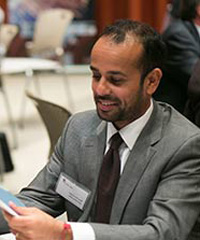The challenge of attracting capital to African agriculture
The Initiative for Global Development (IGD) frontier leader, Riaz Currimjee, is the founding partner and managing director of Surya Capital Limited, an investment and advisory firm focused on private equity investment opportunities in Africa. IGD manager, Allison Spector, recently spoke with Currimjee about the current landscape for African agribusiness investment, including challenges and opportunities for socially-driven investors and companies looking to measure their impact.
As private and public investment in the African agriculture sector continues to grow, what are some of the barriers African companies face in accessing this pool of capital?
At present, the key constraints are adequacy and scalability of business models and suitability for growth capital, which can then catalyse these abstract commitments into capital deployment. The challenge – and the main reason that this pool of capital has not been invested – is that there are actually not that many concrete opportunities for investment in the sector. You have a lot of small-scale impact investing in agriculture – of the US$1-2 million size where organisations like the Acumen Fund focus – but not many of the scale such as ETG Group, which secured a $210 million investment from a consortium of investors including The Carlyle Group.
If you look at basic agriculture, most of Africa, outside of South Africa, Zambia and Zimbabwe, is still dominated by smallholder farmers, or the operations that do exist, such as the Kenyan horticulture firms, are for the export markets. So while there are many laudable initiatives to support smallholder farmers, these have not generated significant capital inflow into the agribusiness sector because we believe that there simply aren’t enough agribusinesses out there with solid business models supported by commercially viable business plans.
Based on your experience, do you think there is a gap between the investors’ criteria and expectations and the on-the-ground realities?
There is a disconnect between what investors are looking for and what kinds of investments are available. When you look across Africa, the reality is that most of the deals are going to be greenfield or very early stage. A lot of investors are looking for brownfield, or existing businesses with track records, and that is where the big mismatch comes up.
How can these discrepancies be reconciled?
It will require change from both the supply and demand sides. On the supply side, investors looking at African agriculture have to be ready for greenfield, start-up operations. If they’re not, they will have a difficult time finding investments. From the demand perspective, companies need to build capacity and scalability within their operations. This is a good role for foundations and government-related programmes providing technical assistance.
It all goes back to realities on the ground. All these global pools of capital raised in New York and London actually know very little about the realities of the African market. They are looking for 100,000 hectare farms, but those are not feasible or available.


